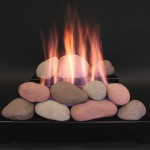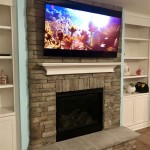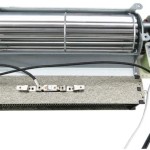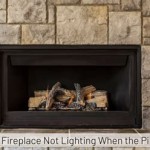How To Install a Dry Stack Stone Fireplace
Installing a dry stack stone fireplace can transform a living space, adding a rustic and elegant focal point. The term "dry stack" refers to a method of stone masonry where stones are fitted together without the use of mortar. This creates a natural, textured appearance that blends seamlessly with various architectural styles. While seemingly complex, a dry stack stone fireplace project can be undertaken by experienced DIY enthusiasts with careful planning and execution. This article provides a comprehensive guide to the process.
Before embarking on this project, it is crucial to assess whether the existing fireplace structure is suitable for accommodating the added weight of the stone. Consult with a structural engineer or qualified professional to determine the load-bearing capacity of the existing hearth, firebox, and surrounding framework. Ensure that the supporting structure can safely bear the weight of the stone materials that will be added. Additionally, it is important to verify local building codes and obtain any necessary permits before beginning any construction work. Adherence to these regulations is vital for safety and legal compliance.
The selection of appropriate stone is paramount for both aesthetic appeal and structural integrity. Natural stone options such as slate, flagstone, and granite are commonly used for dry stack applications. Each type of stone offers a unique texture, color variation, and overall appearance. Consider the existing décor of the room and choose a stone that complements the overall style. The stone should be relatively flat and uniform in thickness to facilitate easier stacking and stability. It is advisable to purchase approximately 10-15% more stone than estimated to account for cuts, breakage, and variations in size. The actual percentage can vary based on the type of stone used and the complexity of the design.
Key Point 1: Preparing the Fireplace Surface
The first crucial step in installing a dry stack stone fireplace is preparing the existing surface. This ensures proper adhesion and stability of the stone facade. Begin by thoroughly cleaning the existing fireplace surround, removing any dust, debris, paint, or wallpaper. A wire brush or scraper may be necessary to remove stubborn deposits. If the existing surface is painted or varnished, it may be necessary to roughen it up with coarse sandpaper or a grinding tool to provide a better bonding surface for the mortar or adhesive that will be used behind the stone.
Once the surface is clean and roughened, apply a scratch coat of mortar to the area where the stone will be installed. The scratch coat serves as a bonding agent, providing a textured surface for the stones to adhere to. Use a notched trowel to apply the mortar evenly, creating grooves that will enhance the mechanical bond with the stone. Allow the scratch coat to cure for at least 24 hours before proceeding with the stone installation. The mortar should be firm but still somewhat pliable to allow for adjustments during stone placement.
For surfaces that are not suitable for direct mortar application, such as drywall or wood, it may be necessary to install a cement backer board. Cement backer board provides a stable and moisture-resistant substrate for the stone. Attach the cement backer board to the existing surface using screws specifically designed for this purpose. Ensure that the backer board is securely fastened and that the seams are taped and mudded with cement board tape and thin-set mortar to create a seamless surface. The cement backer board should be installed according to the manufacturer's instructions. This is a particularly important step for safety and longevity of the installation.
Key Point 2: Stacking the Stones
With the surface prepared, the next step is to begin stacking the stones. Dry laying the stones before applying any adhesive is highly recommended. This allows for visualizing the final appearance, identifying any fitting issues, and making adjustments to the stone placement. Start by selecting the largest stones for the base layer, ensuring that they are level and stable. Work upwards, interlock the stones to create a staggered pattern. Avoid creating continuous vertical seams, as this can weaken the structure. Use smaller stones to fill in gaps and maintain a visually appealing arrangement.
Once a satisfactory arrangement is achieved during the dry lay, begin applying construction adhesive or suitable mortar to the back of each stone. Apply the adhesive in a generous layer, ensuring that it covers the entire surface that will be in contact with the backing. Press the stone firmly into place, using a level to ensure that it is aligned correctly. Allow the adhesive to cure for the recommended time before applying additional weight or pressure. The specific cure time will vary depending on the type of adhesive used.
As the stones are stacked, use shims to maintain consistent spacing and alignment. Shims are small, thin pieces of material that can be inserted between the stones to create uniform gaps and prevent shifting during the curing process. The size and type of shims will depend on the desired aesthetic and the size of the stones. Check the vertical and horizontal alignment frequently using a level and adjust as needed. It is important to maintain a consistent and level surface throughout the installation to ensure a professional-looking result.
For larger stones, it may be necessary to use mechanical fasteners, such as stone anchors or screws, to provide additional support. These fasteners are typically embedded in the mortar or adhesive and secured to the backing structure. Consult with a stone supplier or masonry professional to determine the appropriate type and size of fasteners for the specific stone being used. Mechanical fasteners are especially important for installations in areas that are subject to seismic activity or high winds.
Key Point 3: Finishing and Detailing
After the stones have been stacked and the adhesive has cured, the final step is to finish and detail the fireplace surround. This involves removing any excess adhesive, cleaning the stone surfaces, and applying a sealant or protective coating. Begin by carefully removing any excess adhesive that has squeezed out between the stones. Use a chisel or scraper to gently chip away the dried adhesive, being careful not to damage the stone surfaces. A soft brush or cloth can be used to remove any remaining dust or debris.
Once the excess adhesive has been removed, clean the stone surfaces with a mild detergent and water. Avoid using harsh chemicals or abrasive cleaners, as these can damage the stone. A gentle scrub brush can be used to remove any stubborn stains or dirt. Rinse the stone surfaces thoroughly with clean water and allow them to dry completely before applying any sealant or protective coating. The drying time will vary depending on the climate and the type of stone used.
Applying a sealant or protective coating can help to protect the stone from staining, water damage, and weathering. Choose a sealant that is specifically designed for use on natural stone and that is compatible with the type of stone being used. Apply the sealant according to the manufacturer's instructions, ensuring that the entire surface is evenly coated. Allow the sealant to cure completely before exposing the fireplace to heat or moisture. Regular cleaning and maintenance will help to keep the stone looking its best for years to come.
Consider adding decorative features such as a mantel, hearth extension, or stone accents to further enhance the appearance of the fireplace. A mantel can provide a focal point above the fireplace, while a hearth extension can create a safer and more functional space in front of the firebox. Stone accents, such as keystones or corbels, can add visual interest and detail to the overall design. The addition of these features should be carefully planned and executed to complement the existing stone and architectural style.
Finally, inspect the fireplace surround carefully to ensure that all stones are securely in place and that there are no gaps or loose areas. Apply additional adhesive or mortar as needed to fill any gaps and reinforce any weak points. Allow the repairs to cure completely before using the fireplace. Regular inspections and maintenance will help to identify and address any potential problems before they become more serious. Proper installation and ongoing care will ensure that the dry stack stone fireplace remains a beautiful and functional addition to the home for many years.

Tips On How To Build A Stone Fireplace Horizon

How To Update Your Fireplace With Stone Evolution Of Style

Thin Stone Veneers Make A Fireplace Update Easy Swenson Granite 100 Natural Stones

Dry Stack Vs Mortar Joints The Cultured Stoners

How To Install An Electric Fireplace Morton Stones

Dry Stack Vs Mortar Joints The Cultured Stoners

Dry Stack Vs Mortar Joints The Cultured Stoners

Diy Fireplace Hearth And Stacked Stone Wall Tile Newlywoodwards

How To Build An Outdoor Stacked Stone Fireplace

12 Stacked Stone Fireplace Ideas For Optimal Coziness








